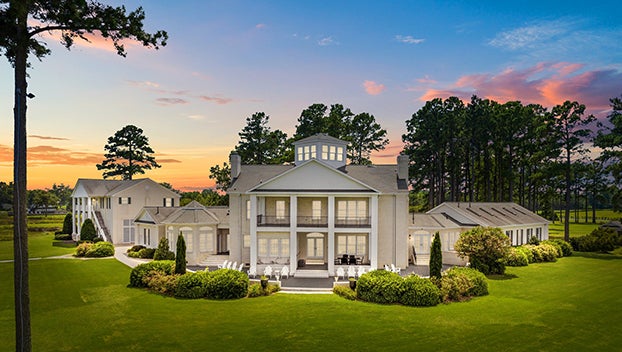Downsizing trend not just for baby boomers
Published 8:35 pm Thursday, August 17, 2017
It started a couple of decades ago: houses getting larger and larger; the acreage they sat on, the same. Now that trend has reversed, and more people are option for less yard and less house.
The downsizing trend isn’t just limited to empty-nesters anymore, and local real estate professionals have some theories as to why the reversal has happened.
“I think it’s about quality of life,” said Gerri McKinley, owner/broker at Coldwell Banker Coastal Rivers Realty. “They’re looking for more of a lifestyle now. They want to travel and have fun and they want to shop and go to dinner. It’s more quality of life now.”
Nan McLendon, with The Rich Company, said Beaufort County does have a big retirement community; people are moving here and opting for smaller houses since their grown children have left home.
“People like to do other things besides keep yards and maintain homes. They’re traveling a lot more and spending their money on traveling,” McLendon said.
But it’s also about expending resources on pleasurable things as opposed to taxes on more expensive homes or paying for heating and air conditioning for square footage that’s not being used, she said.
“Definitely one of the prime motivating factors is the perception or the reality of the cost of energy,” said Scott Campbell, with Century 21. “The larger homes are more expensive to heat and air condition.”
Campbell said usually these downsizing buyers are moving from older homes where they’ve lived for decades.
“(Those homes) are older and less energy efficient. Moving to a smaller space or a newer space helps reduce those real or perceived energy costs,” Campbell said.
Campbell also pointed out people are living longer and are more active in their golden years — an easier to maintain home with less associated expenses helps them stay independent for longer.
This has led to a rise in patio homes’ popularity: smaller homes being built on smaller properties in neighborhoods traditionally known for larger properties. McKinley spoke about a large lot in Smallwood being split into four lots where four 1,300- to 1,500-square-foot homes recently have been built. Some thought they wouldn’t sell, but they’re all under contract.
“We just closed on the first one, and they’re not even finished,” McKinley said.
Downsizing also follows another trend: people moving back to more urban settings, where they can walk to local entertainment and dinner out on the town.
“If you look at what the trend is, it’s people wanting to live closer together and closer to services as opposed to being out in the suburbs,” Campbell said.
The desire for a nice home, but not so much yard, has led to a resurgence in demand for downtown properties.
“This is a good town to downsize to because it has a lower cost of living overall. You have a lot of amenities here — free amenities — like the river. There are great places to walk,” McLendon said.
“Twenty years ago, people were looking for one or two acres in the country. That’s a hard sale now. It’s more than just downsizing the house — it’s the property. They want the beautiful house, but not the yard. They don’t want to spend their weekend mowing. … I think these guys are tired of mowing and the women are tired of cleaning,” McKinley laughed.
Part of the trend might simply be people getting their priorities straight, no matter in what stage of life they happen to be, according to McKinley.
“(Buyers) are not looking for the mega-mansions. They’re looking for comfort,” she said. “I think people have realized it’s not about who has the most possessions.”
Tips on downsizing
For those in the process of downsizing, a smaller space may take a little while to get accustomed to. Here are some tips to help ease the process.
- Discard items. Homeowners who are downsizing from large homes may need to part with some of their furniture to make their transition to smaller homes go more smoothly. There are plenty of local organizations that will be happy to take used furniture, such as the Salvation Army and the Ruth’s House shop, the proceeds of which go to support the local domestic violence shelter.
- Reconsider your furniture. Furniture can make rooms feel cozy, cramped or spacious. For homeowners with limited space in their homes, furniture that also can be used as storage can save space without sacrificing comfort. If the quarters are cramped, and it’s difficult to find space for two dressers, a bed with storage beneath can offer additional space — and be used to store bed linens if closet space is limited. Storage ottomans and/or end tables with storage beneath make living areas feel less cramped.
- Put paint to work. Paint is another way to make the most of a limited space. Painting certain pieces of furniture the same color as the wall can make the furniture blend in and feel less imposing. The result is a room that feels calm and open, even if there is less space to move around than homeowners might have grown accustomed to in their larger homes.
- Keep surfaces free of clutter. Surfaces such as dining tables, coffee tables and kitchen counters tend to accumulate clutter. While such clutter might not feel overwhelming in a large home, in small spaces crowded surfaces can make it feel as though the walls are closing in. Make an effort to keep surfaces free of clutter, resolving to discard or put items away each night before going to bed.







